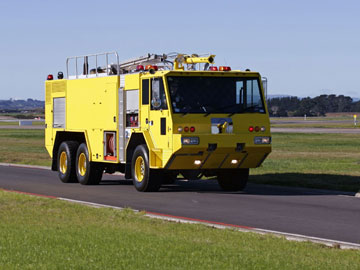
A radio dead zone or an underpowered portable radio may have contributed to a loss of communication between an aircraft and an aviation rescue fire fighting (ARFF) vehicle.
On 26 May 2013, the pilot of a Piper PA-31 aircraft taxied for departure from Port Hedland for a flight to Karratha, Western Australia. The pilot made the necessary common traffic advisory frequency (CTAF) broadcast.
A few minutes later, an ARFF vehicle that had been operating on the eastern side of the airport, entered the taxiway to return to the fire station on the western side. The fire crew made a broadcast to announce their intention to cross the runway. Hearing no response and seeing no aircraft on the runway, the vehicle crossed the runway.
The pilot taxied onto the threshold of runway 32 and commenced the take-off roll. The pilot reported making the required CTAF broadcasts. As the aircraft became airborne, the pilot observed the fire vehicle crossing the runway about 500 m ahead. The pilot judged it safer to continue the take-off. The aircraft passed over intersection of the runway and taxiway between 300 ft and 400 ft above ground. By that time, the fire vehicle had cleared the runway.
The crew of the ARFF vehicle had not heard any broadcasts, nor did they see the aircraft, possibly due to heat haze. The ATSB examined recordings of transmissions broadcast on the Port Hedland CTAF and identified a number of broadcasts made by the pilot and the crew of the ARFF vehicle, however, the pilot’s broadcasts made near the runway threshold were not recorded.
The crew of the ARFF vehicle had not heard any broadcasts, nor did they see the aircraft, possibly due to heat haze.
At the time of the incident, the ARFF crew were using a portable radio as the Port Hedland ARFF service was in ‘setup’ mode awaiting approval by the regulator. The radio mounted in the vehicle had not been programmed to the correct frequency. Airservices Australia determined that the transmission power of the portable radio was lower than the radios mounted in the vehicle and that there may have been a radio dead zone near the runway 32 threshold.
Following the incident Airservices Australia is releasing a national operations safety note advising ARFF operators of the efficient use of aviation radio communications when driving on an airfield. They will also undertake a review of radio coverage at Port Hedland as part of radio commissioning works.
Read the report: Runway incursion between Piper PA-31, VH-KLS and vehicle, at Port Hedland Airport, Western Australia, on 26 May 2013


